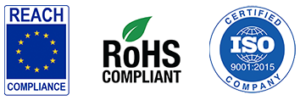The Globally Harmonized System of Classification and Labeling of Chemicals (GHS) is an internationally agreed-upon system, created by the United Nations. It is designed to replace the various classification and labeling standards used in different countries by using consistent criteria for classification and labeling on a global level. Prior to GHS, there were many different regulations on hazard classification in use in different countries. The GHS was designed to replace all the hazard classification systems under on universal system which all countries should follow. This came out of necessity as the amount of international trade has dramatically increased over the last 25 years. For the future, GHS is expected to improve knowledge of the chronic health hazards of chemicals and encourage a move towards the elimination of hazardous chemicals, especially carcinogens, mutagens and reproductive toxins, or their replacement with less hazardous ones.
How does GHS labels for chemicals effect you? The GHS is a complex system and by no means should be taken lightly. By June 1, 2015 all manufacturers must adopt the standard in the United States and all distributors must adopt GHS by December 1, 2015. Training is essential in adopting this new system. As an end user, you must become familiarized with the GHS system. Aspects such as the new SDS format, labels, inspection, and shipping are all affected in some way. Training to understand the new pictograms, precautionary statements etc. must be performed to adequately understand the meaning of the GHS parts. GHS labels for chemicals, such as Epoxyset’s adhesives, potting compounds, coatings, and thermal greases, will be made ready for the target deadline and we believe you should be aware of the changes.
While there are several complex parts to the new GHS system, there are 2 major changes that will be abundantly apparent to most: the SDS (MSDS) and labels. In this post, we will focus on what you will see on the new labels; what is required and what it means. This does not replace proper training but gives a good insight into what you will see in the near future.
There are 6 manditory sections of the GHS label which are highlighted on the label above. There is other information on the label which are necessary for proper use.
1) PRODUCT IDENTIFIER: Product identifiers are meant to prevent accidental or unknown exposure with the ability to accurately identify the chemical and its hazard. Product identifiers are the ingredient names or number of the pure chemical substance or chemical mixture. In the case of Epoxyset and other manufacturers of proprietary blends, the product identifier is the product name or number and should match SDS.
2) GHS PICTOGRAMS: Diamond shaped red, black, and white pictograms display information about the hazardous risks associated with the product or chemical. Along with signal words (discussed next), the pictograms communicates the severity of the risk and prevents accidental/unknown exposure. There can be multiple pictograms on the label to display multiple hazards.
3) Signal Words: Signal words communicate the severity of hazard and alert to a potential hazard. The signal word “WARNING” specifies less sever, non-lethal hazards. The signal word “DANGER” specifies more severe, potentially lethal hazards.
4) HAZARD STATEMENTS: These words and phrases are meant to describe the nature and degree of the hazard of the chemical. Hazard statements should be on the label for a chemical or substance possessing more than one hazard. For example: “Causes Skin Irritation”. It is not manditory to include hazard codes on the labels but it makes it easier to match with SDS.
5) PRECAUTIONARY STATEMENTS: The precautionary statement describes recommended measures to minimize or prevent adverse effects resulting from exposure.
6) SUPPLIER INFORMATION: Each container filled with the specified is required to have the supplier information such as name, address and phone number. The name on the label above is indicated on the logo.
The label can also have other information on it such as weight, lot number, barcodes, expiration dates, etc. However, these 6 parts must be included on all labels to be GHS compliant. Understanding GHS labels for chemicals are an essential building blocks in understanding the entire GHS system.


